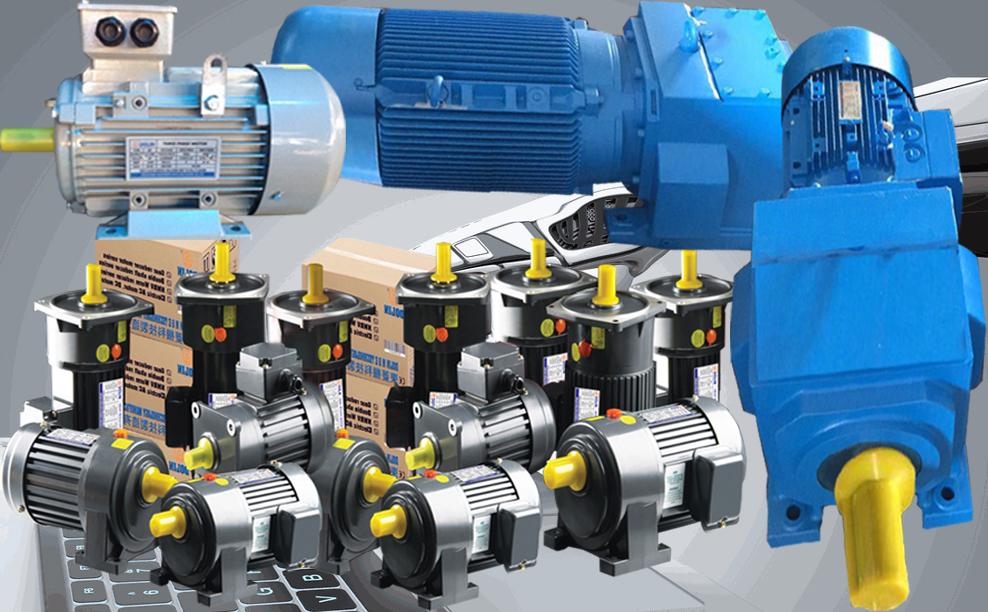- Home
- /
- News
- /
- Industry News
Gearmotor Selection: Gearbox Reducer Housing Materials

Shafts, bearings, seals, gears, oil/grease: all essential components to the successful operation of a fractional horsepower gearmotor. While these are considered the “working components” of a gearbox reducer, one vital part remains that has the duty of holding them all together: the reducer housing.
Focus should be given the reducer housing design, so the best material and technology is chosen for a particular application.
Billet aluminum
Available in a variety of two dimensional extruded shapes including rounds, hexagons, squares and rectangles, billet aluminum is commonly used in the prototyping process or when annual part usage is low. Billet aluminum has a high degree of machining flexibility, but requires much more machining than a cast aluminum part.
Pros: flexible machining options for prototypes and low volume parts; short lead times as no tooling is required; high dimensional accuracy due to the machining of all features; no internal porosity that could cause lubrication leaks; no upfront tooling cost; unlike castings, no draft is required on any of the part features.
Cons: high cost of material and labor due to increased machining and the inability to core out unused areas; part weight likely to be higher.
Sand cast aluminum
As the name implies, a single use sand mold (that is later recycled into new molds) is required for the sand casting process. While aluminum is typically used for gearbox reducers, several other materials can be sand cast such as iron, bronze and brass. Sand casting has a high degree of part design flexibility with a low tooling investment. The cast features, however, have a low degree of precision that require increased machining stock during the casting process.
Pros: flexible casting design options to reduce material and weight; low internal porosity; low tooling investment ($3000 – $10,000); good for low volumes.
Cons: high surface roughness; at least 1/16” machining stock required to true up critical features; more challenging to fixture during machining process; higher part cost than other casting processes.
Permanent mold aluminum casting
Instead of using a sand mold that is used once; permanent mold aluminum casting uses a reusable mold produced from metal. While part complexity may not be quite as high as sand casting, permanent mold casting is conducive for slightly higher part usage to lower the piece price.
Pros: good for mid to high volumes as piece price is less than sand casting; improved surface finish over sand casting; low internal porosity; less machining stock required versus sand casting.
Cons: part size and geometry more limited than sand casting; higher tooling cost ($5,000 – $20,000) than sand casting (but lower than other casting technologies).
Die casting aluminum or zinc
When in need of a gearbox reducer housing that has a high annual usage, die cast aluminum or zinc may be the answer. Die casting can produce parts with thinner wall sections, tighter tolerances and smoother surface finishes than both sand or permanent mold castings. The piece price is also less, but the dies (castings) are much more expensive making this process suitable for high volumes.
Pros: tighter tolerances, smoother surface finishes and thinner wall sections than sand or permanent mold casting; low piece price suitable for high volumes; long die life (100,000+ shots).
Cons: expensive (~$20,000+) die tooling making die casting not as suitable for low volumes; high internal porosity limiting the amount of machining stock as leak paths may occur.
Magnesium injection molding (thixomolding)
Capable of producing parts to tolerances that may not need any post machining, magnesium injection molding may be a good solution for very high volume, high precision reducer housings. Wall sections even thinner and less porous than die casting can be achieved. However, due to very expensive tooling costs, magnesium injection molding is not usually suitable for low volume parts.
Pros: tighter tolerances and thinner wall sections than die casting; suitable for high volumes; very light part weight; long die life (150,000 – 500,000 shots); magnesium can still be machined if even tighter tolerances are needed.
Cons: extremely expensive (~$100,000+) tooling cost making magnesium injection molding likely not suitable for low or even mid-range volumes.
While the technologies listed above are commonly used for various types of fractional horsepower reducer housings, several variations of these technologies exists along with completely different technologies.
Dolin has experience with the housing technologies mentioned and can tap into the experience of its diverse supply source to design and create a gearbox reducer housing that will meet the requirements of virtually any application.
Billet aluminum
Available in a variety of two dimensional extruded shapes including rounds, hexagons, squares and rectangles, billet aluminum is commonly used in the prototyping process or when annual part usage is low. Billet aluminum has a high degree of machining flexibility, but requires much more machining than a cast aluminum part.
Pros: flexible machining options for prototypes and low volume parts; short lead times as no tooling is required; high dimensional accuracy due to the machining of all features; no internal porosity that could cause lubrication leaks; no upfront tooling cost; unlike castings, no draft is required on any of the part features.
Cons: high cost of material and labor due to increased machining and the inability to core out unused areas; part weight likely to be higher.
Sand cast aluminum
As the name implies, a single use sand mold (that is later recycled into new molds) is required for the sand casting process. While aluminum is typically used for gearbox reducers, several other materials can be sand cast such as iron, bronze and brass. Sand casting has a high degree of part design flexibility with a low tooling investment. The cast features, however, have a low degree of precision that require increased machining stock during the casting process.
Pros: flexible casting design options to reduce material and weight; low internal porosity; low tooling investment ($3000 – $10,000); good for low volumes.

Cons: high surface roughness; at least 1/16” machining stock required to true up critical features; more challenging to fixture during machining process; higher part cost than other casting processes.
Permanent mold aluminum casting
Instead of using a sand mold that is used once; permanent mold aluminum casting uses a reusable mold produced from metal. While part complexity may not be quite as high as sand casting, permanent mold casting is conducive for slightly higher part usage to lower the piece price.
Pros: good for mid to high volumes as piece price is less than sand casting; improved surface finish over sand casting; low internal porosity; less machining stock required versus sand casting.
Cons: part size and geometry more limited than sand casting; higher tooling cost ($5,000 – $20,000) than sand casting (but lower than other casting technologies).
Die casting aluminum or zinc
When in need of a gearbox reducer housing that has a high annual usage, die cast aluminum or zinc may be the answer. Die casting can produce parts with thinner wall sections, tighter tolerances and smoother surface finishes than both sand or permanent mold castings. The piece price is also less, but the dies (castings) are much more expensive making this process suitable for high volumes.
Pros: tighter tolerances, smoother surface finishes and thinner wall sections than sand or permanent mold casting; low piece price suitable for high volumes; long die life (100,000+ shots).
Cons: expensive (~$20,000+) die tooling making die casting not as suitable for low volumes; high internal porosity limiting the amount of machining stock as leak paths may occur.
Magnesium injection molding (thixomolding)
Capable of producing parts to tolerances that may not need any post machining, magnesium injection molding may be a good solution for very high volume, high precision reducer housings. Wall sections even thinner and less porous than die casting can be achieved. However, due to very expensive tooling costs, magnesium injection molding is not usually suitable for low volume parts.
Pros: tighter tolerances and thinner wall sections than die casting; suitable for high volumes; very light part weight; long die life (150,000 – 500,000 shots); magnesium can still be machined if even tighter tolerances are needed.
Cons: extremely expensive (~$100,000+) tooling cost making magnesium injection molding likely not suitable for low or even mid-range volumes.

While the technologies listed above are commonly used for various types of fractional horsepower reducer housings, several variations of these technologies exists along with completely different technologies.
Dolin has experience with the housing technologies mentioned and can tap into the experience of its diverse supply source to design and create a gearbox reducer housing that will meet the requirements of virtually any application.
Key: Vertical 3 Phase ac induction motors, electric motor, Vertical Inverter Duty motor, DC Brake motor Oil Pressure Motor, helical gear motor, AC mini Induction DC gear motor, Gear reducer motor series, NMRV NRV worm reducer series, Worm reducer series, Horizontal Inverter duty, worm gear series, ac motor, vertical gearmotor, helical horizontal gearmotor, gear reduce motor, bevel gearmotor, cyclo gear motor, NMRV gear motor, worm reducer
Newer articles
- Extending The Life Of Gear Reducers (13/11/2019)
- What are Power-Transmission Gears? Technical Summary (08/11/2019)
- Three causes of gearbox failure (07/11/2019)
- Construction of Three Phase Induction Motor (20/11/2019)
- Why use a frequency inverter along with an electric motor? (01/11/2019)
- What are the Benefits of using a Frequency Converter With an Electric Motor? (06/11/2019)
- AC Gear Motors: Leveraging Torque-Boosting Power (31/10/2019)
- Planetary Speed Reducer Working Principle and Applications (05/11/2019)
- Factors to Consider in Cabling a Reliable VFD System (07/11/2019)
- All you need to know about gear motors and their components (01/11/2019)
Older articles
- Advantages & Disadvantages of DC (09/09/2019)
- How to select the best type of gear reducer (31/01/2019)
- How do gearmotors impact reflected mass inertia from the load? (06/05/2019)
- How a 3 Phase AC Induction Motor Works (01/10/2019)
- Know Basics of 3 Phase AC Induction Motor and Its Control using SVPWM (10/10/2019)
- Calculating Power Factor (05/09/2019)
- Defining motor service factor (02/09/2019)
- Gear Reduction. A familiar term to many, but what does it actually mean? (05/08/2019)
- What is Service Factor and How is it Used? (31/07/2019)
- What You Need to Know about "Service Factor" (31/07/2019)





Join